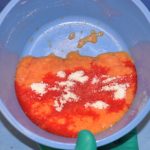The use of stem cells in medicine has garnered much media and public attention. Because it is a natural component of human tissues and it is a pluripotent cell that has the capability of converting to many different adult cell types, it holds much promise for numerous medical therapies. While the quest for which medical diseases stem cells offers the best benefit is being investigated with much fervor, there is no question that anti-aging conditions are one logical application.
While not a disease in the truest sense, aging is a natural medical condition that is degenerative of both cells and the substrates in which they exist. The use of stem cells and the factors that they may excrete would seem like they could offer some regenerative effects on one’s external appearance. Thinning and wrinkled skin, atrophy of fat and supportive connective tissues, and restoration of face and body contours have the potential to be enhanced with adjunctive stem cell techniques.
The promulgation of stem cells to the forefront of anti-aging treatments has been driven by the realization of their easy access. While stem cells have traditionally been thought of as existing largely in bone marrow, it is now known that fat is the richest source of adult stem cells. Estimates are that fat has 300 to 500 times more stem cells than bone marrow. Given that fat can be quickly harvested through liposuction, the acquisition of stem cells is now easy.
While plastic surgeons have trued numerous methods of isolating stem cells at the time of their harvest, the present reality is that it is not easy to obtain really true concentrates of them. Most so-called stem-cell therapies today in plastic surgery are nothing more than concentrated fat injections. While these fat injections do contain some stem cells, calling them stem cell injections or stem-cell enhanced fat injections is a stretch and more of a marketing concept that it is a true stem cell therapy.


The now easy access to stem cell concentrates allows them to be used for numerous potential cosmetic and regenerative medicine uses. Some of the well known current applications include their adjunctive use with fat for lipofilling for facial volume restoration and breast and buttock augmentation. When used as isolated stem cell concentrate injections, they have potential use for facial skin rejuvenation, wrinkle reduction and fold and crease filling.
Dr. Barry Eppley
Indianapolis, Indiana


